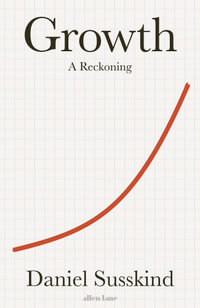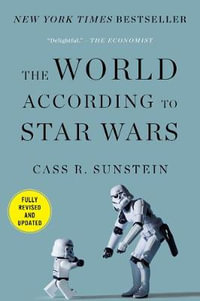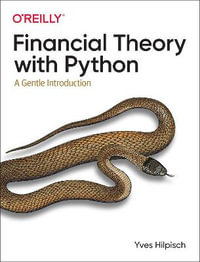| Preface | p. ix |
| List of Abbreviations | p. xii |
| List of Symbols | p. xiii |
| Introduction | p. 1 |
| What is welfare economics? | p. 2 |
| Is welfare economics a positive or normative study? | p. 5 |
| Welfare versus utility | p. 6 |
| Utility measurability and interpersonal comparability | p. 16 |
| The organisation of the book | p. 18 |
| Summary | p. 19 |
| Basic Value Judgments and Subjective Judgments of Fact | p. 19 |
| Pareto Optimality | p. 26 |
| The Pareto principle | p. 26 |
| The conditions for Pareto optimality | p. 28 |
| The attainment of Pareto optimality | p. 38 |
| Summary | p. 42 |
| The First-Order Conditions for Pareto Optimality | p. 43 |
| The Direction of Welfare Change: Welfare Criteria | p. 47 |
| The debate on compensation tests | p. 47 |
| Taking distribution into account: Little's criterion | p. 52 |
| The inadequacy of purely distributional rankings | p. 57 |
| Retreat to purely efficiency comparisons | p. 61 |
| Quasi-Pareto improvements | p. 62 |
| Conclusions | p. 64 |
| Summary | p. 64 |
| The Magnitude of Welfare Change: Consumer Surplus | p. 65 |
| The origin of the concept: Dupuit and Marshall | p. 65 |
| Hicks' four measures and the average cost difference | p. 66 |
| Which measure? | p. 70 |
| Aggregation over commodities: the issue of path dependency | p. 72 |
| Aggregation over individuals: the Boadway paradox | p. 76 |
| The approximate nature of surplus measurement | p. 78 |
| Consumer surplus of diamond goods | p. 80 |
| Some uses of surplus measurement | p. 82 |
| Summary | p. 85 |
| CV, EV or Marginal Dollar Equivalent? | p. 86 |
| Acceptability of the Marshallian Measure--The Benchmark Case of a Cobb--Douglas Utility Function | p. 90 |
| Social Choice | p. 92 |
| Arrow's impossibility theorem | p. 92 |
| The impossibility propositions by Kemp--Ng and Parks | p. 98 |
| Can the paradox of social choice be resolved? | p. 101 |
| Revealing the intensity of preferences | p. 107 |
| A dollar is a dollar: a 90 per cent solution to the paradox of interpersonal cardinal utility | p. 115 |
| The possibility of a Paretian liberal | p. 119 |
| Summary | p. 120 |
| The Incompatibility of Individualism and Ordinalism | p. 121 |
| The Optimal Distribution of Income | p. 127 |
| Conceptual determination of optimal distribution | p. 127 |
| Utility illusion | p. 129 |
| Theories of optimal income distribution and taxation: Lerner and Mirrlees | p. 131 |
| Discussion | p. 135 |
| Concluding remarks | p. 141 |
| Summary | p. 143 |
| Externality | p. 144 |
| The concept and classification of externalities | p. 144 |
| Divergence from optimality and the tax/subsidy solution | p. 147 |
| Other solutions | p. 152 |
| The conscience effect | p. 154 |
| The Coase theorem and liability rules | p. 158 |
| Summary | p. 162 |
| Public Goods | p. 164 |
| Basic characteristics of public goods | p. 164 |
| Optimality conditions and the financing of public goods | p. 167 |
| An incentive-compatible mechanism for preference revelation | p. 174 |
| Income distribution as a peculiar public good: the paradox of redistribution | p. 180 |
| Economic theories of clubs | p. 182 |
| Summary | p. 183 |
| The Paradox of Redistribution and the Paradox of Universal Externality | p. 184 |
| First, Second or Third Best? | p. 187 |
| The theory of second best | p. 188 |
| Softening the blow of second best | p. 193 |
| A theory of third best | p. 196 |
| Towards a third-best policy | p. 203 |
| Summary | p. 208 |
| A Dollar is a Dollar--Efficiency, Equity and Third-Best Policy | p. 208 |
| Beyond Marginal Analysis: Perspectives from an Inframarginal Analysis of the Division of Labour | p. 230 |
| Towards a more complete welfare economics | p. 230 |
| Marginal versus inframarginal analysis | p. 231 |
| Basic inframarginal analysis of the division of labour | p. 232 |
| The devastating implications of increasing returns on some traditional conclusions | p. 234 |
| The Smith dilemma and its resolution | p. 240 |
| The Pareto optimality of general equilibrium in the new framework--the role of entrepreneurs | p. 243 |
| Welfare economic issues and the division of labour | p. 246 |
| Implications | p. 250 |
| Summary | p. 253 |
| A Simple Model of the Yang--Ng Framework of Specialisation | p. 254 |
| From Preference to Happiness | p. 257 |
| Preference economics or welfare economics? | p. 257 |
| Developments that have prompted a reconsideration | p. 261 |
| A simplified analysis of welfare | p. 275 |
| Implications and concluding remarks | p. 277 |
| Summary | p. 282 |
| Conclusion: Towards an Interdisciplinary Study of Welfare? | p. 284 |
| Further considerations | p. 287 |
| Towards an interdisciplinary study of welfare | p. 293 |
| Summary | p. 296 |
| Notes and References on Some Advanced and Applied Topics | p. 297 |
| References and Author Index | p. 306 |
| Subject Index | p. 351 |
| Table of Contents provided by Ingram. All Rights Reserved. |
























